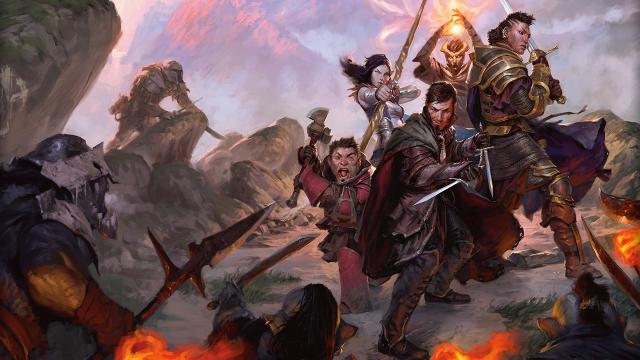So, you want to play Dungeons & Dragons but aren’t sure how? As we approach the 50th anniversary of this fantasy tabletop role-playing game, there has never been a better time to pick it up.
Whether you’ve been die-ing (geddit?) to get an adventuring party together for a while, were inspired to dip your toe in after watching the recent movie, or you’re a fan of actual play podcasts like Critical Role, this is everything you need to know to start playing Dungeons & Dragons.
Just follow our beginner’s guide to playing Dungeons & Dragons, and you’ll be casting ‘Fireball’ alongside the best of them in no time.
How do you play Dungeons & Dragons?
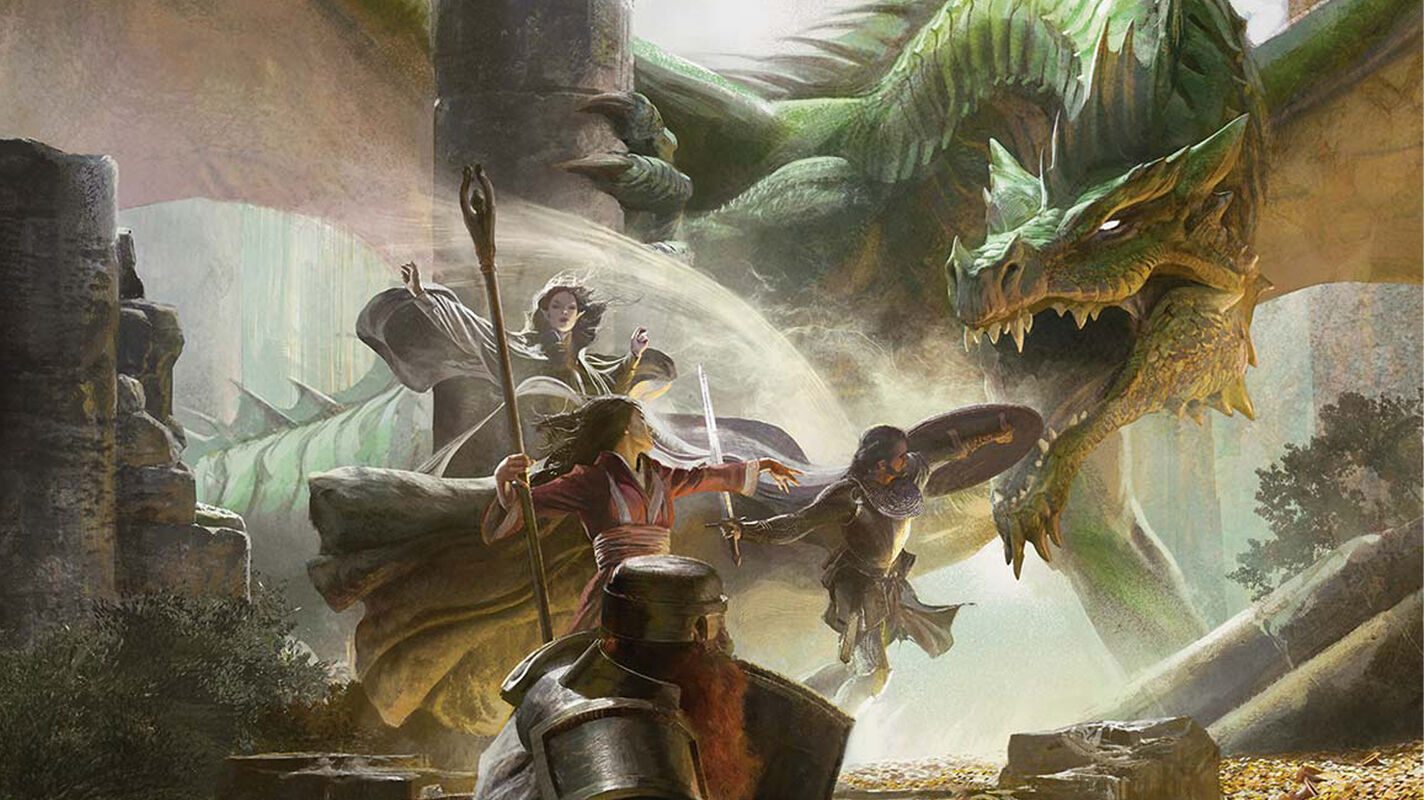
To keep it simple, D&D usually involves a party of adventurers who’ve been tasked with completing some form of quest, usually given out at a tavern. In some cases, this quest can start small before snowballing into something much grander, or it can start epic from the get-go.
As you move through the world, you’ll cross swords with various beasties, solve puzzles and attempt to talk your way through role-playing scenarios. You’re given a broad selection of races and classes to create your character with, which include classic fantasy races like elves, dwarves and gnomes, along with classes like fighter, wizard and rogue. Each player’s character will have some form of unique expertise for particular skills, which will help you solve the various problems and puzzles you’ll encounter. Some people are good at punching, others are good at words.
All of this is overseen by the Dungeon Master, who is responsible for running the game and plays all of the non-playable characters and monsters you’ll face off against. The DM will help keep the adventuring moving along, making notes of all your party’s interactions and choices, which may or may not come back to help you/bite you on the arse later. That one guy you poured beer on a dozen sessions ago? Guess what, he’s back for revenge and has a dragon now.
Most situations involve the players rolling a twenty-sided die, which is contested by the DM. A roll of 1 is seen as a critical failure, while 20 is a critical success (you’ll understand the pain and joy that these numbers bring in no time).
As you play, your characters will earn experience points that will allow them to level up, which unlocks new class features, ability improvements and makes them less likely to die in one shot – although the odds of that happening are never zero.
Setting up your first game of Dungeons & Dragons
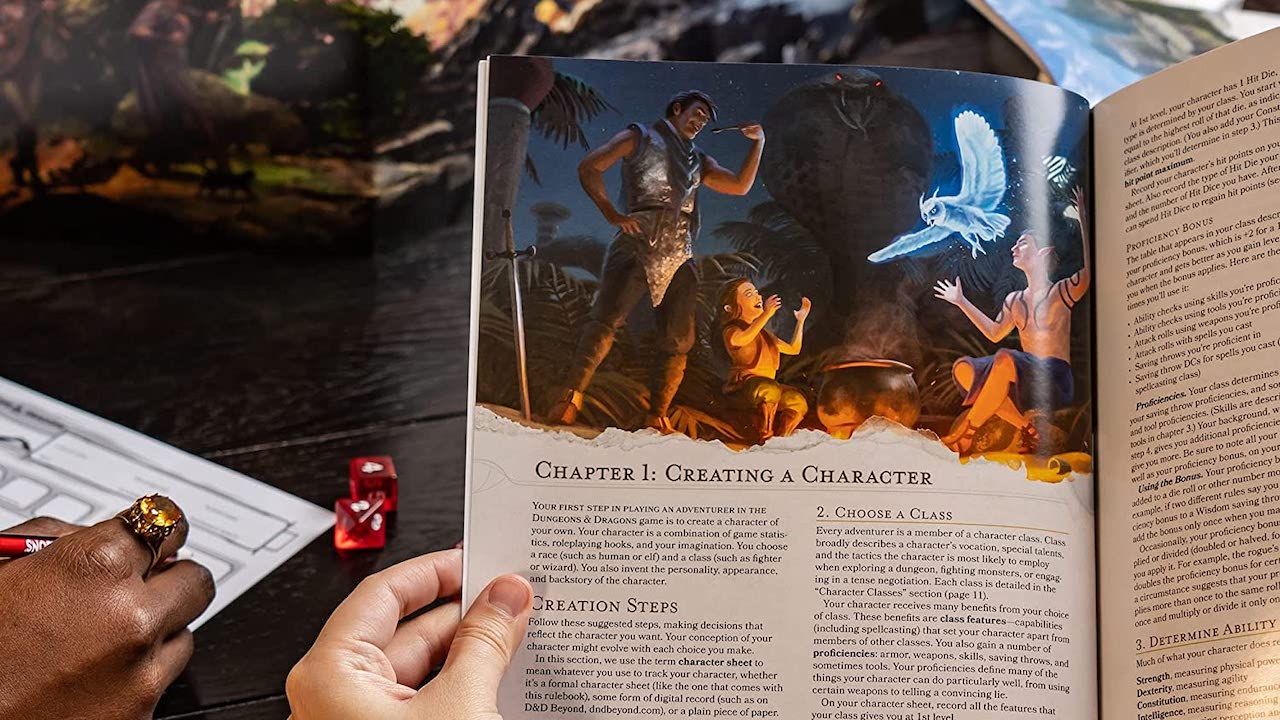
Before we start, it’s important to note that we’re currently on the 5th Edition of Dungeons & Dragons, so everything referenced here is with that edition in mind.
First up, you’re going to need a few people to play with. Apart from having a Dungeon Master to run the game, we recommend playing with a group of roughly four to five players. This is the sweet spot when it comes to balancing out the party. Anything less feels like you’re stretching things a bit thin, anything more and your game can start bloat.
You should have some of the core rulebooks on hand (more on those in a moment) – but it’s particularly important your group has at least one copy of the Player’s Handbook. This particular rulebook is an essential reference guide for both players and DMs, as it features explanations for the game’s core rules and a guide to creating your characters.
Speaking of, you can’t start playing D&D without a character. We recommend rolling up characters with your entire group. It’s always fun to go back and forth on what everyone wants to play as, and if you’re playing with strangers, it’s a good way to establish a bond early on. Plus, it’s a nice way to avoid somehow rolling up a party that’s all drow rogues.
When it comes to creating characters, some people will come to the table with epic backstories that explain every facet of their character’s life, and some people rock up with just a name and prefer to find their character while playing the game. Both ways are perfectly acceptable (and everything in-between).
Here’s the most important tip we have for setting up a D&D game, though: decide on a set date and time well in advance and try to keep the frequency consistent when it comes to playing – even if it’s only once a fortnight or even a month. Keeping with a routine date will help your party maintain their investment. If we had a dollar for every D&D game that was cancelled because we couldn’t get the numbers and/or had to shift the date, we’d have enough to fill a dragon’s hoard.
What do you need to begin playing D&D?
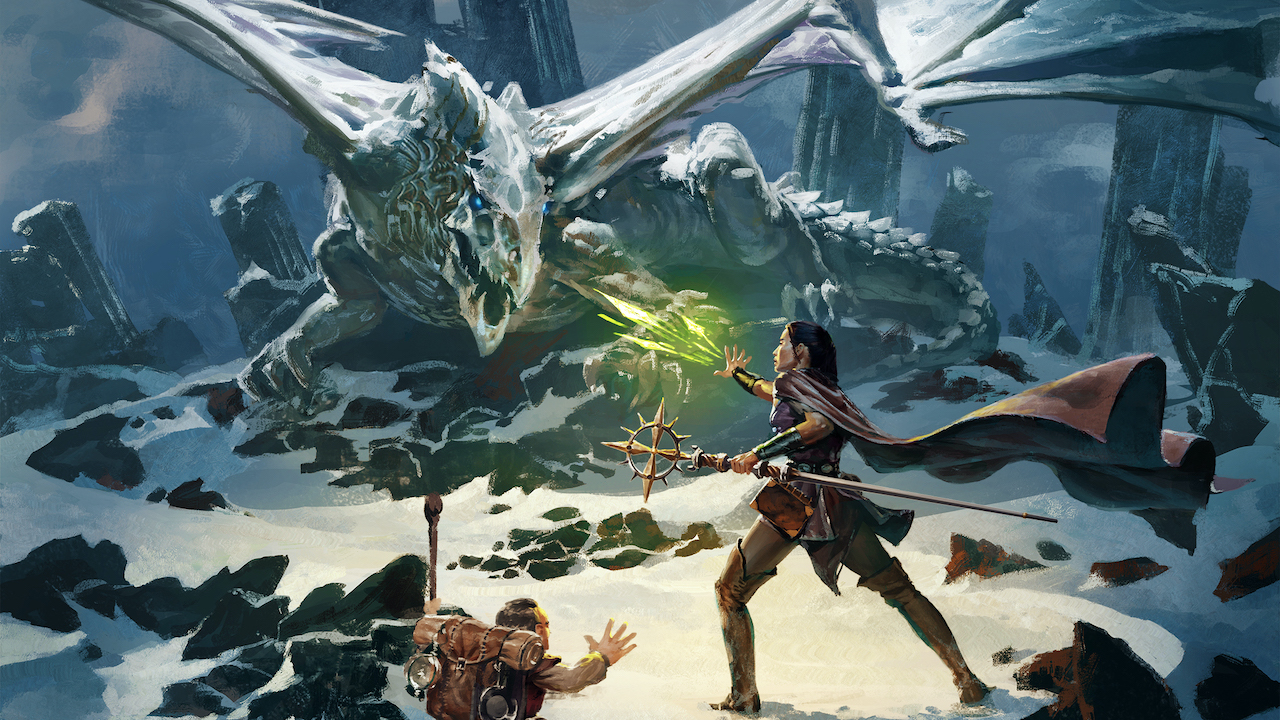
The core rulebooks for Dungeons & Dragons
Player’s Handbook
If you’re going to buy one handbook, make sure it’s this. Not only will the Player’s Handbook help you roll up a character with its collection of race and class options, but it also includes info for other essentials such as items, spells and feats. The PHB also has all of the basic rules you’ll need to play Dungeons & Dragons, making it an indispensable companion to all games.
- Where to buy Player’s Handbook: Amazon Australia ($47.96) | Catch ($56) | Kogan ($48.50)
Monster Manual
It says what it does on the can. This massive encyclopedia is overflowing with monster stats, covering everything from goblins to dragons, gelatinous cubes and everything else in between. While some adventure books include a few monsters, most of them will refer back to the stats of this book, so you’ll get a lot of use from it.
- Where to buy Monster Manual: Amazon Australia ($55.04) | Catch ($56) | Kogan ($48.50)
Dungeon Master’s Guide
A handy guide that’ll help build up your skills as DM by guiding you through tricker player questions (“Can you drink a potion one-handed underwater?”) and a good source of inspiration if you want to add more personal flourishes to your games. It’s especially helpful if you plan on creating homebrew games from scratch.
- Where to buy Dungeon Master’s Guide: Amazon Australia ($59.95) | Catch ($56) | Kogan ($48.50)
- Where to buy the Core Rulebook Set: Amazon Australia ($169) | Catch ($171) | Kogan ($171)
What gear do you need to play Dungeons & Dragons?
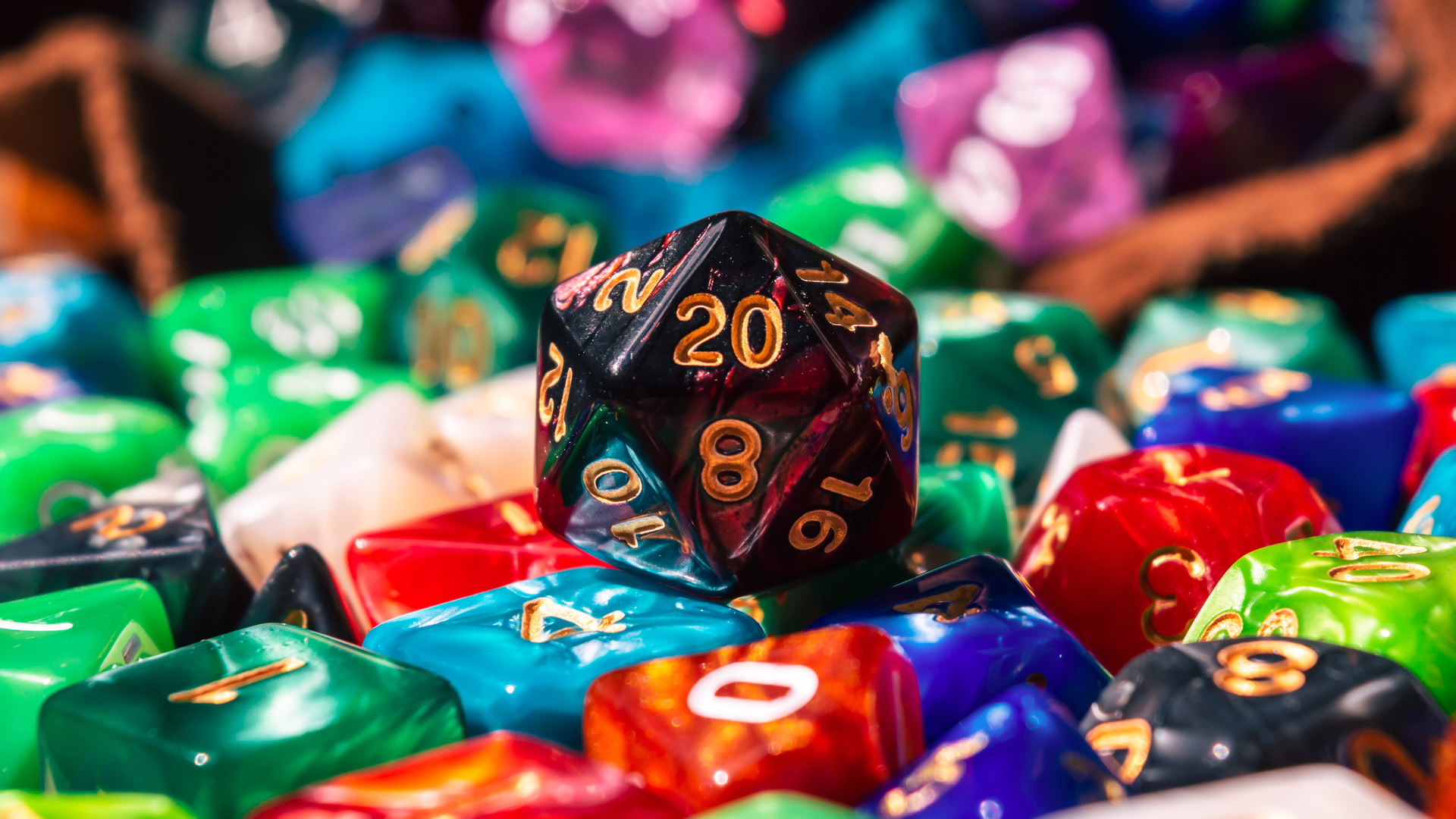
A set of polyhedral dice
The most essential gear. Ideally, everyone should their own set of polyhedral dice. It makes things move a bit faster if you aren’t passing around one set all night, and you’ll have plenty of dice on hand when it’s time to roll for big damage. Just remember: you can never have enough dice.
Dungeon Master’s Screen
A protective screen that will help you obscure dice rolls and notes from the prying eyes of your players. These screens can be made out of anything (use an old pizza box, why not), but the official DM screens include a rule guide, which is handy for quick reference.
Pencils and paper
If you opt to use physical character sheets instead of going digital via D&D Beyond, you’ll want a pencil and rubber on hand so you can update your sheet whenever you need to. Having some extra paper on hand is also helpful for taking notes, sketching out maps and keeping track of all the friends/enemies you’ll make in-game.
Get one of the D&D Starter Sets
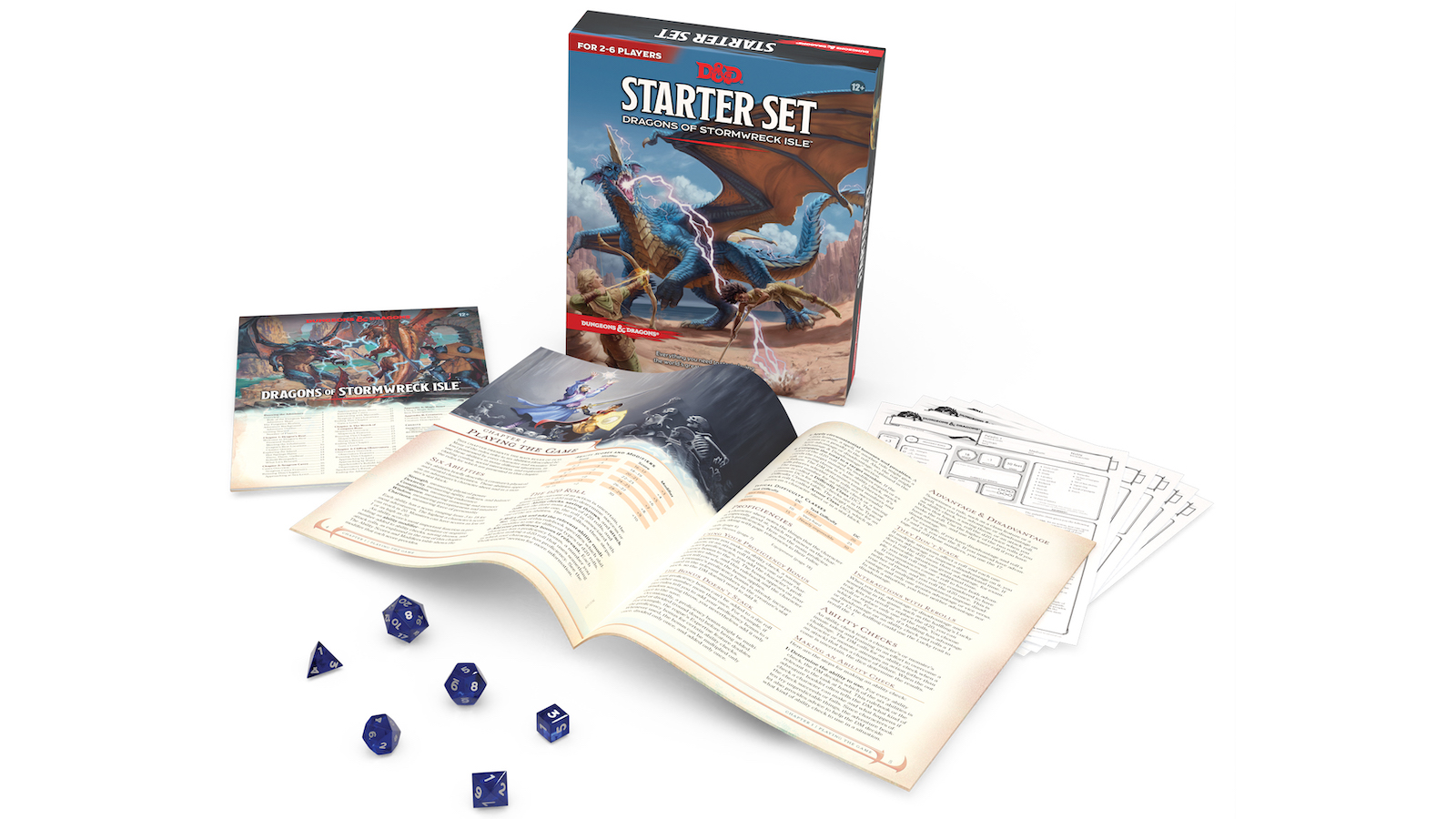
Like all tabletop games, you learn best by doing – which is why the Dungeons & Dragons starter boxes are a great place to start for beginners.
Currently, there are two Starter Sets – The Lost Mine of Phandelver and Dragons of Stormwreck Isle – and one Essentials Kit (The Dragon of Icespire Peak), which are all designed to teach new players and Dungeon Masters the basic rules of the game. Each set includes an adventure that’ll help beginners get a good grip on how to play Dungeons & Dragons, taking them through the first few character levels.
All three sets are good options, but we’d recommend the Essentials Kit the most. The Dragon of Icespire Peak includes a few extra dice, a mini-DM screen and its adventure is a bit meatier than the two provided with the Starter Sets.
You can check out Gizmodo Australia’s hands-on thoughts about the Dragons of Stormwreck Isle starter set here.
- Where to buy The Lost Mine of Phandelver: Amazon Australia ($24.95) | Catch ($31.09) | Kogan ($35.95)
- Where to buy Dragons of Stormwreck Isle: Amazon Australia ($19.98) | Catch ($30) | Kogan ($30)
- Where to buy The Dragon of Icespire Peak: Amazon Australia ($28.03) | Catch ($36.50) | Kogan ($26.95)
A few D&D adventure recommendations

While some people prefer to create a world from scratch, there’s also a vast collection of premade campaign books that’ll allow you to dive straight into an adventure. There’s nothing wrong with preferring book adventures over homebrew ones – different strokes for different folks.
These official books feature fully formed modules, so any DM can pick up a copy and have everything they need to run an entire campaign (which usually takes players from level 1 up to level 10+). Once you finish the adventure included in the Starter Sets, we recommend picking up one of these. There’s also a hoard of great adventures worth playing that aren’t made by Wizards of the Coast as well, which you can find here.
Icewind Dale: Rime of the Frostmaiden
A deity known as The Frostmaiden has plunged the region of Icewind Dale into a state of everlasting night, creating a state of never-ending winter. There is some hope – somewhere beyond the Ten-Towns lies the long-lost Caves of Hunger, which contains an ancient power that can be used to defeat the Frostmaiden and lift this curtain of icy dread. However, not everyone wants this winter to end and the Frostmaiden isn’t the only threat here.
Where to buy Icewind Dale: Rime of the Frostmaiden: Amazon Australia ($57.63) | Catch ($56) | Kogan ($49.95)
Curse of Strahd
Set in the spooky realm of Barovia, Curse of Strahd is a spooky adventure where your party is tasked with defeating the titular Count Strahd von Zarovich. To defeat the vampire lord, you’ll need to explore Barovia for a set of magical items, before facing off against Strahd in Castle Ravenloft. A must-play for fans of Gothic horror and classic monsters.
Where to buy Curse of Strahd: Amazon Australia ($50.50) | Catch ($56) | Kogan ($48.50)
Tomb of Annihilation
The peninsula of Chult is currently being plagued by a death curse, a necromantic disease that’s causing anyone who has ever been raised from the dead to slowly rot away while preventing anyone else from being raised.
Somewhere deep in the jungles of Chult lies the Soulmonger, an ancient artifact that is causing this curse to spread. Many adventurers have ventured into these jungles in the hopes of destroying this artifact, but few have returned successful – if at all. Tomb is one of the harder D&D adventures available, so we don’t recommend it for beginners.
Where to buy Tomb of Annihilation: Amazon Australia ($58) | Catch ($48.50) | Kogan ($48.50)
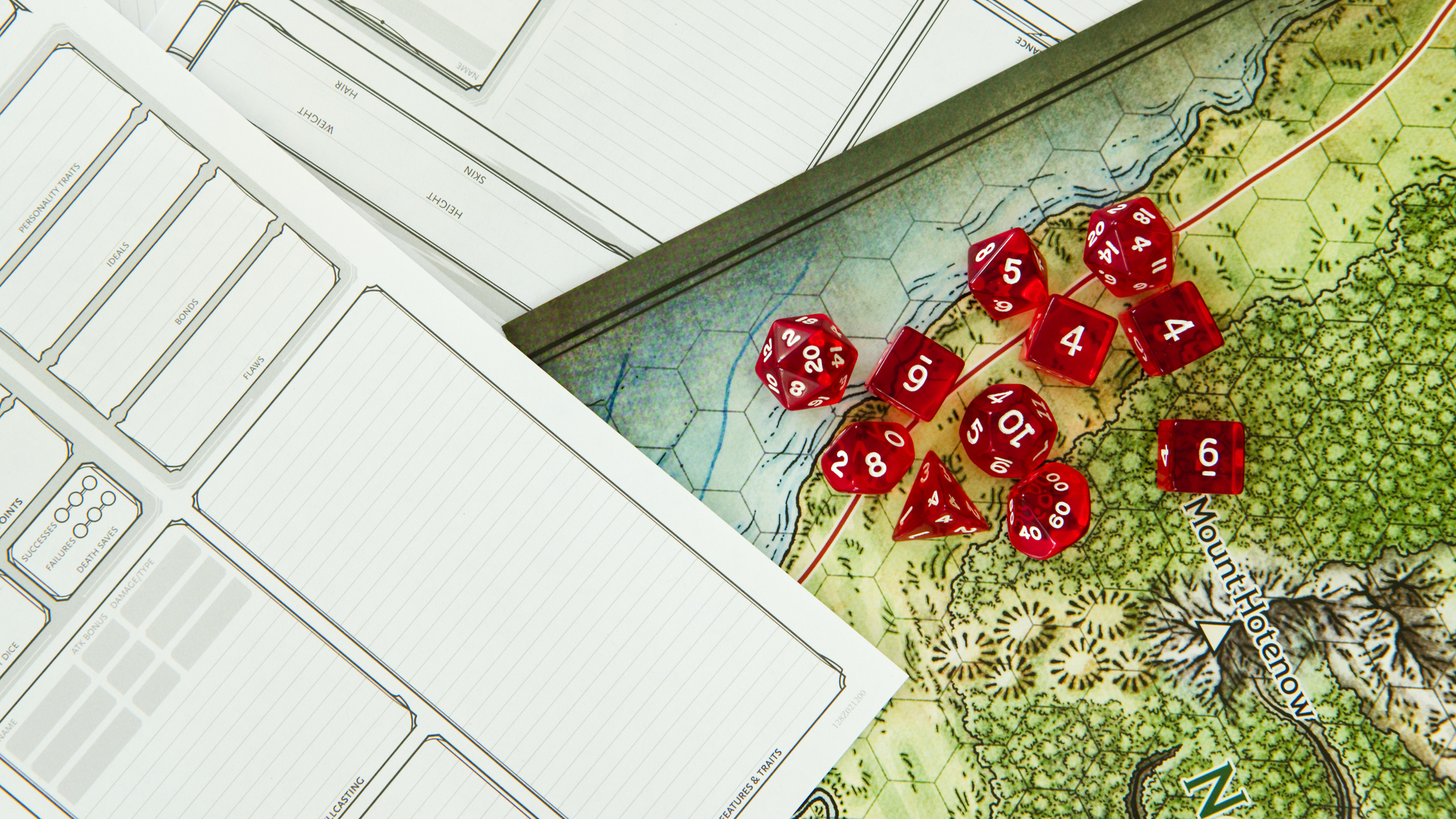
Candlekeep Mysteries
While massive adventures that take months to complete are epic, sometimes you want to play something shorter. Candlekeep Mysteries is a collection of 17 short mystery-themed adventures that are designed to be completed in one or two play sessions. These adventures are a lot of fun, and incredibly easy to pick up and run.
Where to buy Candlekeep Mysteries: Amazon Australia ($46.77) | Catch ($56) | Kogan ($48.50)
Journeys through the Radiant Citadel
Journeys through the Radiant Citadel is another collection of short, done-in-one adventures. What makes Radiant Citadel stand out is that each of its 13 adventures is written by an author of colour, and are inspired by different real-world cultures. These adventures let you experience creatures and locations that you usually wouldn’t find in your average D&D adventure, so you really get to experience how rich this fantasy world can be.
Where to buy Journeys through the Radiant Citadel: Amazon Australia ($54.02) | Catch ($53) | Kogan ($48.50)
Our friends over at Kotaku Australia have a pretty solid list of D&D adventures you should play that’s worth reading as well.
